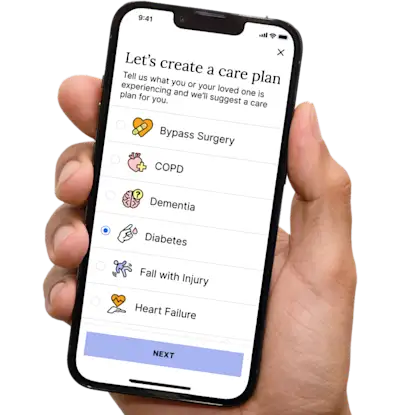Physician Orders For Life-Sustaining Treatment (POLST)
POLST exists at some level in all 50 states, from just having legislation passed, to implementing pilots, to having it as the standard of care.
Get insurance benefits, legal documents, and medical records in one place

Helpful Highlights
POLST is derived from physician orders for life-sustaining treatment, though the names and specific acronyms vary by region and jurisdiction.
A POLST form requires a provider's review and signature, and the signed form must be in English.
For links to available POLST templates by state, see that state's POLST and DNR Forms content.
For information on other medicolegal forms (such as Healthcare POA), visit our Legalities stack or search our state-specific Medical and Financial Legal Forms content.
A POLST FORM IS IN EFFECT UNTIL IT IS FORMALLY REVOKED.
POLST can only be revoked by your loved one or your loved one's primary provider.
POLST cannot be revoked by any family member, any power of attorney, or any other healthcare representative.
Why POLST?
High-quality and personalized end-of-life care continues to be a significant challenge in America.
The current standard of care during an emergency is to do everything possible in an attempt to save a life; however, not everyone wants every available treatment. Having a discussion with a provider and completing a POLST form is one way to ensure that your loved one's preferences are respected, recorded, and followed in critical care situations.
POLST explained
POLST is a medical document that translates your loved one's healthcare preferences into specific, actionable medical orders. It is typically used for individuals with serious illnesses or nearing the end of life. The POLST form is completed in consultation with a healthcare provider and it includes detailed instructions about the level of medical interventions your loved one wants.
Different from an advance directive
Unlike an advance directive, the POLST form is a medical order that can be used immediately by healthcare providers - everyone from the PCP to EMS to hospital staff - helping to ensure that your loved one's wishes are followed and rapidly delivered during medical emergencies or transitions of care. In other words, a provider does not have to wonder what your loved one wants or take the time to write orders specific to your loved one at every point of care. They're done.
However, like a POLST form, an advance directive may be used to express treatment preferences to healthcare providers, though many people have both an advance directive and a POLST form. This is because the POLST contains medical orders that can be acted upon immediately, whereas an advance directive has to be reviewed by a provider and translated into medical orders. This consumes valuable time and creates room for transcription errors. With a POLST form, orders are clear and done.
Different from a do-not-resuscitate (DNR) order
A POLST and a DNR are related but serve different purposes. While both a POLST and a DNR order deal with end-of-life medical decisions, a POLST is a more comprehensive document covering various life-sustaining treatments, whereas a DNR only addresses the decision regarding resuscitation.
Individuals may have both a POLST and a DNR order, depending on their healthcare preferences and medical conditions, and the resuscitation directive in both documents should match. Note, however, that a separate DNR order is not necessary since the POLST form includes a resuscitation directive.
POLST is not for everyone
POLST is helpful if your loved one is seriously ill (advanced illness), or frail with trouble performing routine daily activities, or is receiving hospice services.
For those who do not fit into one of these descriptions, an advance directive + a DNR is probably more suitable.
States with POLST as the standard of care

Some states simply use the National POLST form and not a POLST form specific to that state. The National POLST form is acceptable for states with POLST programs but without specific forms.
**While POLST forms are available in various languages for ease of education and understanding, the signed POLST form must be in English so EMS and hospital personnel can read it and follow the orders without the need for a translator.**
No content in this app, regardless of date, should ever be used as a substitute for direct medical advice from your doctor or other qualified medical professionals.
Likewise, no content in this app, regardless of date, should ever be used as a substitute for any direct legal advice you receive from your lawyer or other qualified legal professionals.
Get more support and guidance on insurance benefits, medical records and legal forms.
Helpful brings together your insurance benefits, legal documents, and medical records in one personalized place — so you always know what you have, and never have to search again.

Technology for Health Tasks. Mental Health for the Tough Stuff.
Helpful connects your medical records, insurance, and caregiving tasks automatically. And when you need more than logistics, a therapist is here to guide you.
In-Network and Covered
For Individuals, Couples and Families
HIPAA Compliant, Data Stays Private


Healthcare Tasks Simplified

From syncing records to spotting drug interactions, Helpful does the heavy lifting, turning complex health info into clear tasks and showing you benefits you can actually use, giving you clarity and control over your care.

In-Network Mental Health

Our licensed therapists are here to support you and your loved ones through stress, burnout, and life’s hardest moments, with an inclusive, compassionate approach that works with most insurance plans.

Create Legal Documents

Plan ahead by creating will, trusts, advance directives and more, that ensure your wishes are honored in the event you can’t speak for yourself -with Helpful guiding you every step of the way.